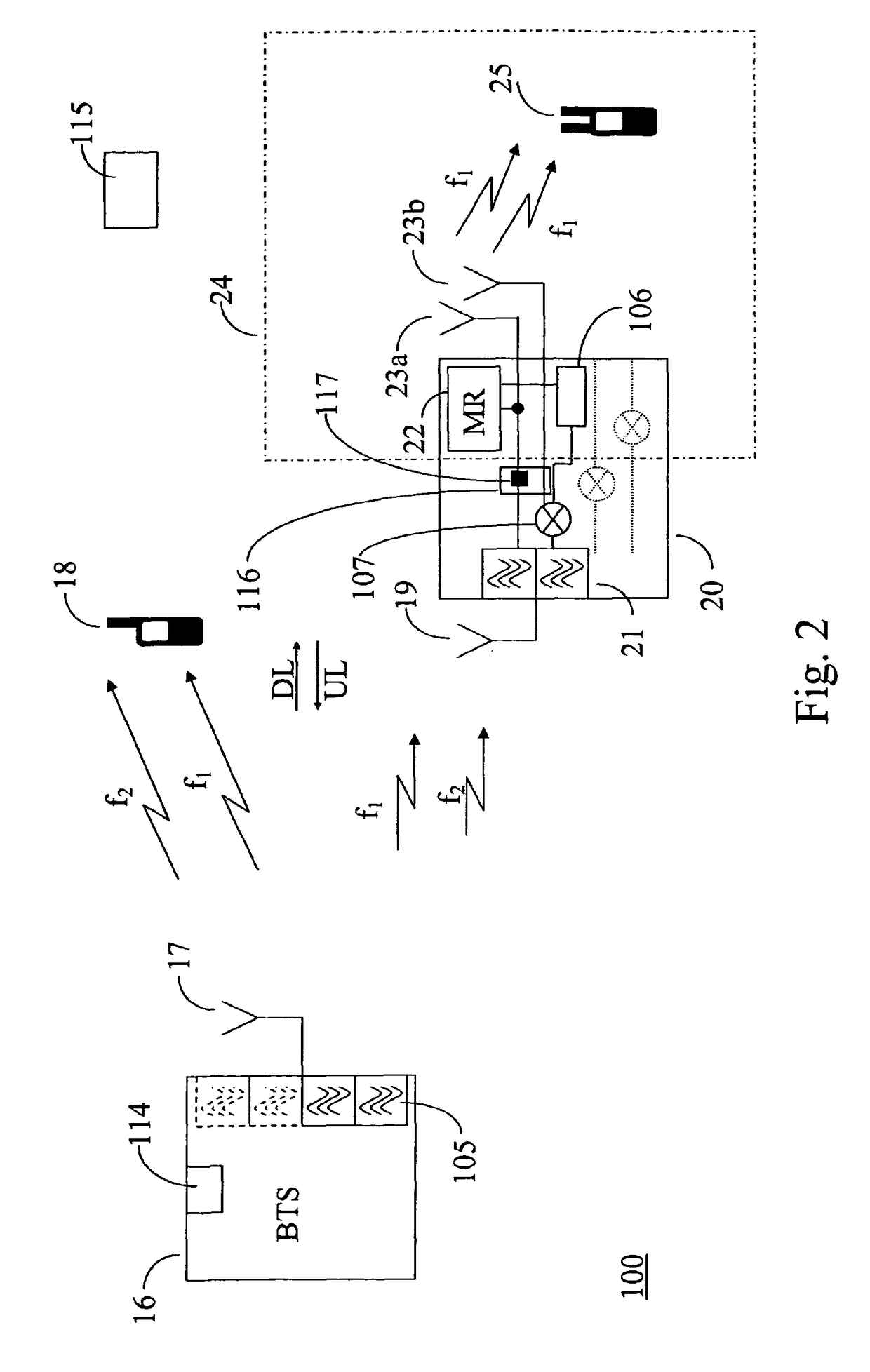Wireless communication network using frequency conversion of MIMO signals
a wireless communication and mimo signal technology, applied in the field of communication networks, can solve the problems of inability to achieve significant increases in data rates, inability to justify the addition of infrastructure costs, and inapplicability of outdoor areas to unwanted restrictions of transmission capacity due to mimo signal correlation in parallel. , to achieve the effect of reducing the speed of the mobile umbrella cell, and reducing the number of data packets
- Summary
- Abstract
- Description
- Claims
- Application Information
AI Technical Summary
Benefits of technology
Problems solved by technology
Method used
Image
Examples
Embodiment Construction
[0045]FIG. 1 diagrammatically shows a communication network 100 with a MIMO-capable base station 1, a MIMO-capable terminal 3, a MIMO-capable terminal 15 and two repeaters 5, 10. In this arrangement, the transmission path of the communication signals is shown in the downlink direction DL for the sake of clarity. The embodiments shown can be correspondingly transferred to the transmission of the communication signals in the uplink direction UL. The utilization of MIMO transmission techniques in the uplink direction UL is currently not a component of MIMO-capable mobile communication networks. However, the utilization of MIMO transmission techniques in the uplink direction UL will be a firm component of future revisions.
[0046]To utilize the MIMO transmission technique, the base station 1 and the terminals 3, 15 in each case have at least two antennas for the communication within a frequency band assigned for a mobile network. The corresponding two antennas 2a and 2b are identified for...
PUM
 Login to View More
Login to View More Abstract
Description
Claims
Application Information
 Login to View More
Login to View More - R&D
- Intellectual Property
- Life Sciences
- Materials
- Tech Scout
- Unparalleled Data Quality
- Higher Quality Content
- 60% Fewer Hallucinations
Browse by: Latest US Patents, China's latest patents, Technical Efficacy Thesaurus, Application Domain, Technology Topic, Popular Technical Reports.
© 2025 PatSnap. All rights reserved.Legal|Privacy policy|Modern Slavery Act Transparency Statement|Sitemap|About US| Contact US: help@patsnap.com



